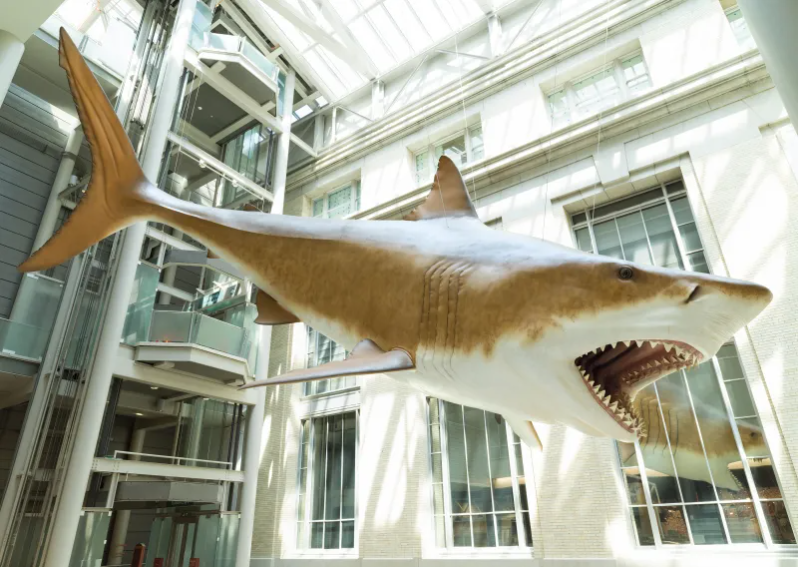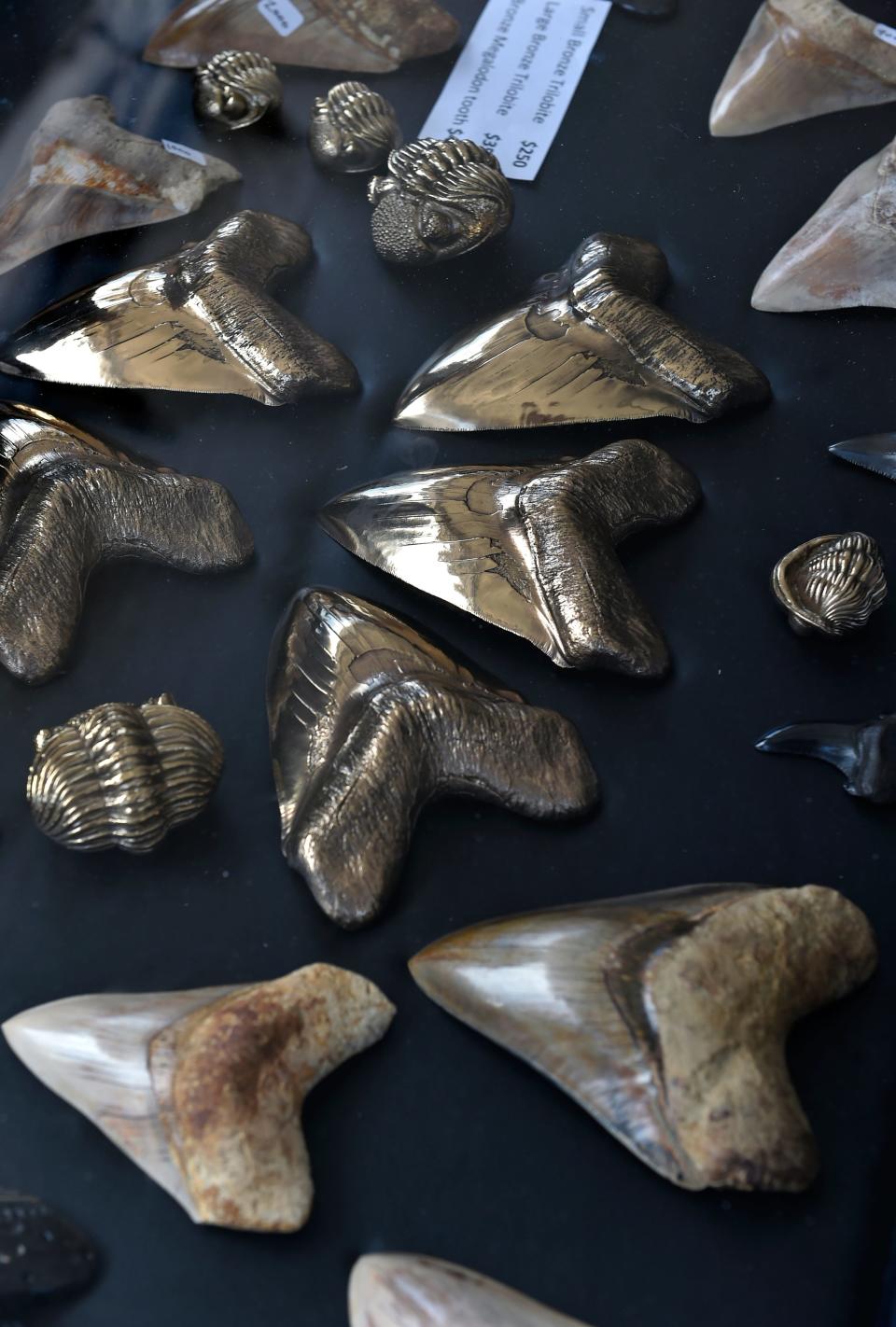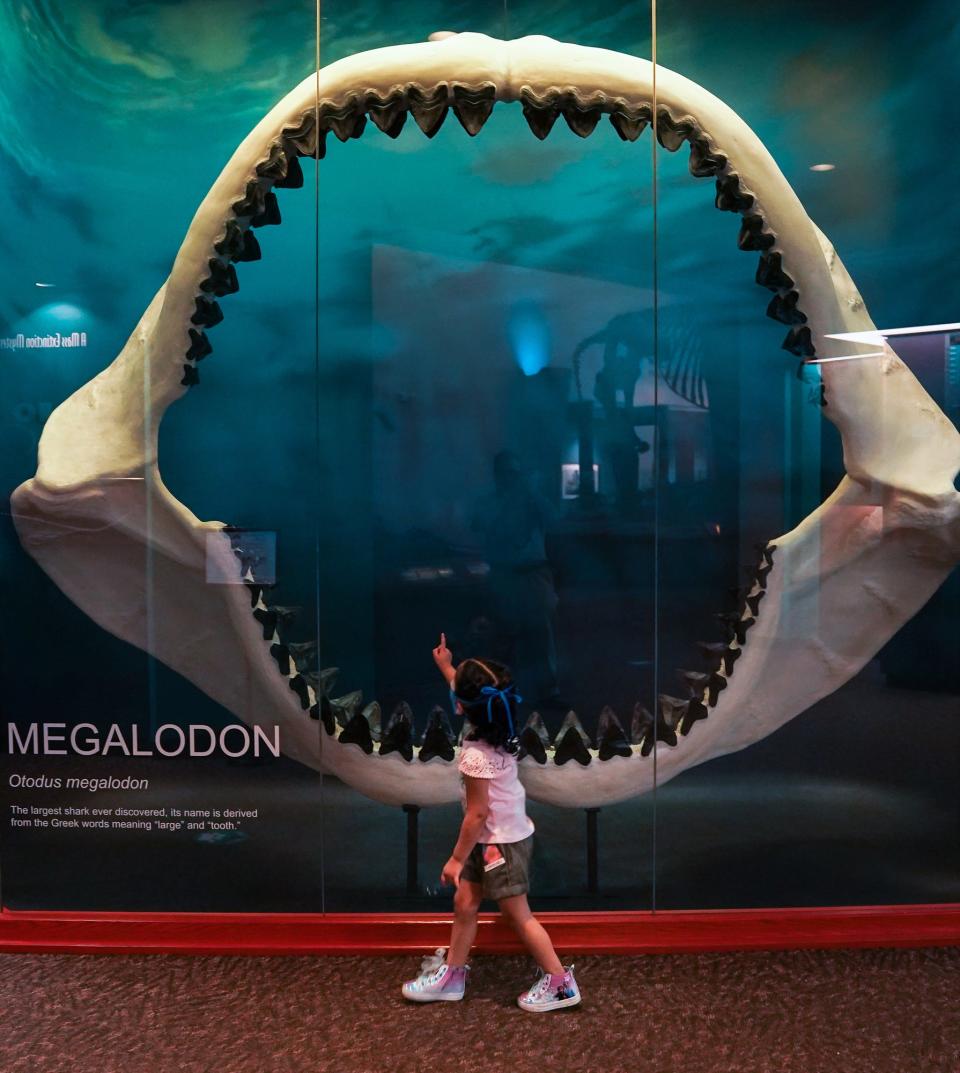What else can be found from the Titanic wreck? Recent scan finds megalodon tooth necklace
During a recent full-digital scan of the Titanic wreck, the luxury ocean liner that sank more than 100 years ago, British company Magellan found something unexpected.
In what Magellan called “the largest underwater scanning project in history, the deep-water investigation specialist used two submarines to produce 700,000 images of the wreck.”
Those images revealed a megalodon tooth necklace with gold jewelry built into it.
The shark species, which lived roughly 3.6 million to 23 million years ago across every part of the planet’s ocean, was approximately up to three times the length of a modern-day great white shark, which can get up to 15-16 feet, according to the Smithsonian Institution.
Even though shark tooth necklaces are commonly used as amulets (especially among Polynesian cultures), they can have several different meanings, including protection, good luck and strength, according to the Dutch Shark Society website.
“An agreement between the United Kingdom and the United States prevents members of the public from removing artifacts from the wreck and surrounding bed,” according to Magellan.

The company, based in Guernsey (one of the Channel Islands in the English Channel), specializes in “deep- and ultra-deep-water site investigation, subsea intervention and seabed mapping,” according to its website.
Although this particular tooth cannot be removed from the site, scientists have been able to study the massive shark species.
What were these beasts’ lives like all those million years ago? What made them extinct? Here is what we know:
What is a megalodon shark?
The Carcharocles megalodon (or Otodus megalodon) shark was “once the most fearsome predator” in the ocean, according to the Smithsonian’s Ocean Portal.
How big were megalodons exactly? Scientists estimate these sharks could be between 34 and 56 feet long, depending on their sex, and weigh about 40 tons.
These estimates are based on known relationships between tooth size and shark body length.
How big were their teeth? About the size of an adult human’s hand.

These sharks are part of a lineage that includes the great white, mako (its closest relative) and thresher sharks, among others. This lineage can be traced back to the Cretaceous Period (145 million and 66 million years ago).
NSB shark statues: Long-awaited decorative shark statues project debuts in NSB. Here is where to find them.
What did megalodons eat?
As the apex predator of its time, their diets consisted of several other sea species, including baleen whales, seals, sea cows and sea turtles.
It also preyed on other fish species and even other sharks.

Besides being found buried in shipwrecks, megalodon teeth are sometimes found “embedded” in whale bone fossils, according to the Smithsonian.
“It is believed that larger prey, like small whales, were struck in the chest, the robust megalodon teeth able to puncture through their tough ribs,” according to the institution. “Conversely, they likely rammed smaller prey with their snouts to stun them before biting it.”
Are megalodons still around?
No. The species disappeared more than 3 million years ago “and will likely stay that way,” according to The Atlantic Shark Institute.
Although recent sightings of large sharks spark the hope of megalodon fans that one might still roam the seas, they are often great whites.
That was the case last year, when the Rhode Island-based institute’s sonar fish finder showed what at first appeared to be a megalodon.
Megalodon sighting? Researchers thought they found a giant, extinct shark. Here's what they really picked up.
But it turned out to be “a large school of Atlantic mackerel that hung around the boat for about 15 minutes,” the institute said.
Why did the megalodon go extinct?
The megalodon's diet was affected because of changes in ocean ecosystems during the Pliocene (a time of global cooling 5.3 million to 2.6 million years ago).
“With such a large body size, the megalodon required ample prey to fuel its body,” according to the Smithsonian.
With tectonic plate activity leading to drastic changes in both land (with the formation of volcanoes) and the sea (with changes in water temperature and salinity), several sea species died out, compromising the food chain structure megalodons relied on.
For information about megalodons, visit the Smithsonian’s Ocean Portal at ocean.si.edu/ocean-life.
This article originally appeared on The Daytona Beach News-Journal: Megalodon tooth necklace found in Titanic wreck. Here is what we know

